Review: Journey To The Savage Planet is one small step for man, one fun leap for mankind.
7 min. read
Published on
Read our disclosure page to find out how can you help MSPoweruser sustain the editorial team Read more
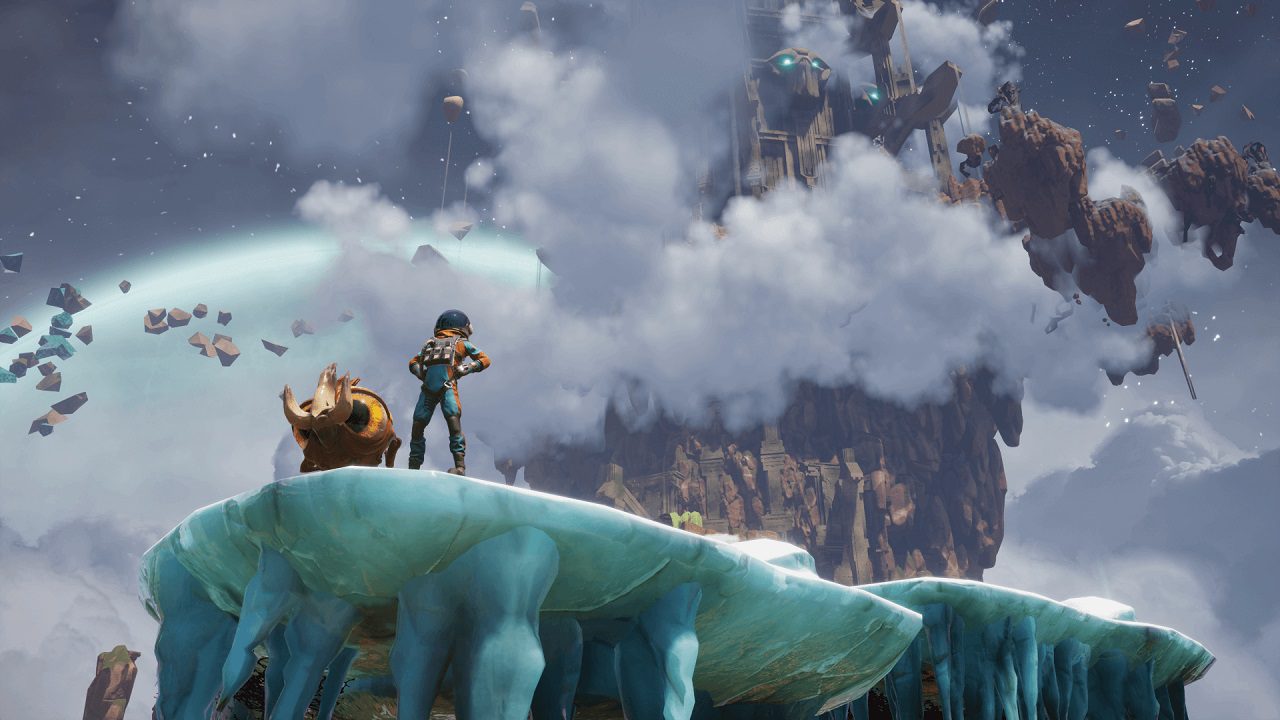
Played on PlayStation 4.
Journey To The Savage Planet opens with you crash-landing on a planet simply known as AR-Y 26. It’s a charming place, full of differing terrains such as freezing ice, searing lava, and rather temperate grasslands. There’s also plenty of native fauna, including the adorable Pufferbirds, who have all managed to adapt to their individual environments thanks to the power of evolution. It’s a beautiful and vibrant place and aside from the occasional run-in with an animal who wants nothing more than to feast on your insides, I don’t see why anyone would want to leave.

The main goal of the game is to explore the planet and see if it’d be possible for humans to live there. As a definitely highly valued employee of Kindred Aerospace – which, by the way, was voted the “4th Best Interstellar Exploration Company” – you’re all about finding homes for humanity by forcibly displacing the native inhabitants of other planets. However, your ship really put the “crash” in “crash-landing” and your mission is now to fix up the ship, explore the planet, and scan everything that moves.
I know that comparing games to other games is vaguely frowned upon sometimes – and I promise you I’m not going to call Journey To The Savage Planet the Dark Souls of planetary exploration, because it’s really not – but the game does feel like someone put the graphics and exploration angle of No Man’s Sky and the humour and guns from Borderlands in a blender and mixed it all together. As such, while the game is positively lovely to look at, the humour in the game tends to be quite hit or miss at times and for those with a more serious streak, it’ll irk you easily.
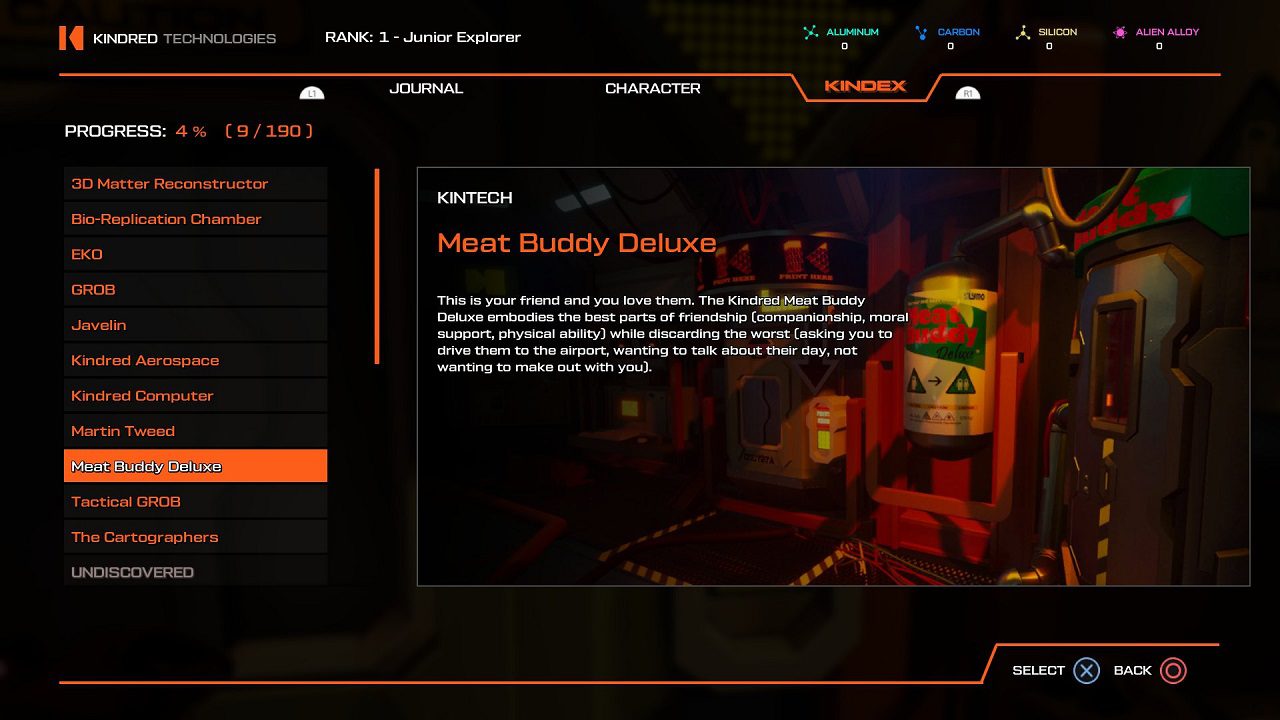
Take, for example, your overly helpful and sharp-tongued AI assistant, E.K.O., who is nigh-on constantly chattering away in your ear during the game. Those who aren’t fans of satirical commentary or dry wit will most likely hate E.K.O., who seems to be overly aware that the company you both work for is a capitalist nightmare. While most of E.K.O.’s chatter does turn out to be helpful, it also becomes vaguely repetitive over time, but you can always toggle how much E.K.O. talks in the Options menu.
Speaking of capitalist hellscapes, death is fairly cheap in Journey To The Savage Planet. The fourth best interstellar exploration company may be the fourth best at exploring, but it’s apparently number one when it comes to creating a perfect clone of you with your old memories when you unfortunately part ways with this mortal coil. Upon death, you’ll miraculously pop out of your clone-tube back on your spaceship and, if your old lifeless body happened to have valuable loot on it when you died, you can always head back to your resting place and retrieve what you lost. As long as you didn’t die in a burning pool of lava deep inside a cave filled with enemies. Might be best to pass on that one.
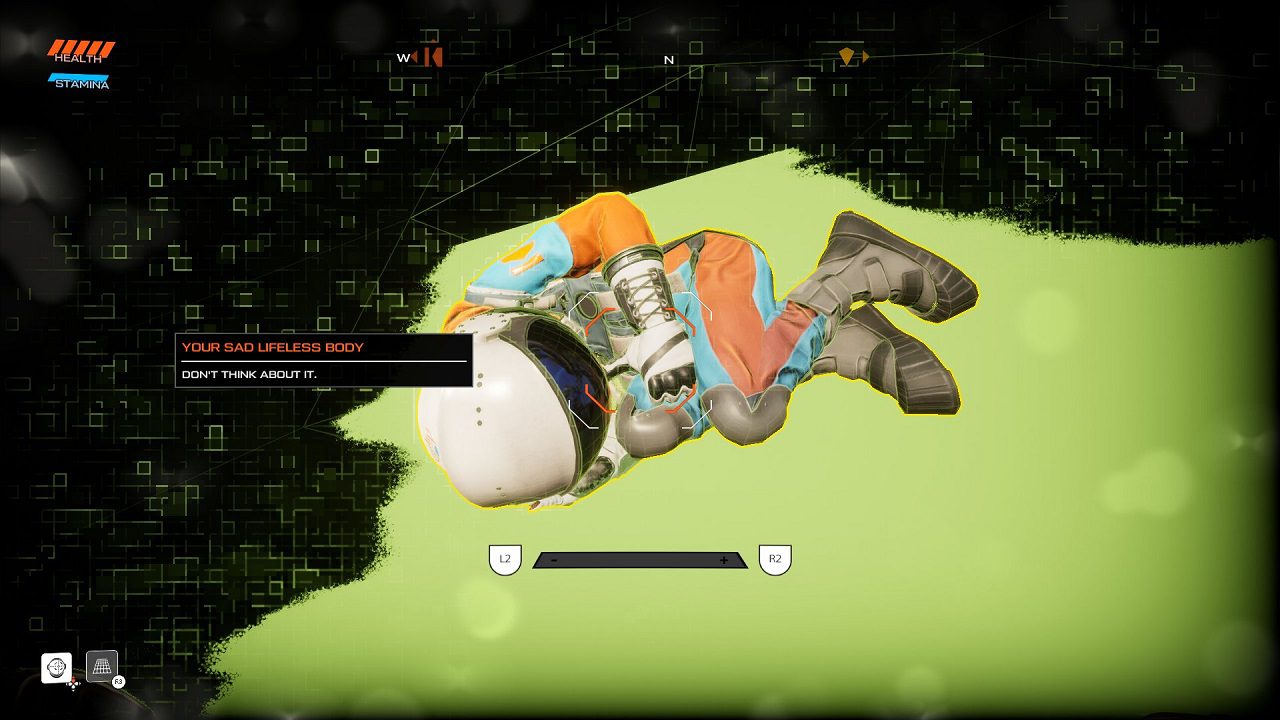
If you fear death or just generally enjoy having a large health and stamina pool, you can always upgrade your bars by finding the large deposits of orange goo that are scattered around AR-Y 26. By eating these (or, to be more accurate, by smearing them on your helmet while making odd noises) you’ll gain small boosts to both stats, allowing for more planetary exploration before your untimely demise. The deposits are fairly easy to track down and eating the goo counts towards an achievement, so chomp away.
Upgrading your equipment is also almost as easy as smearing orange goo on your helmet, as your 3D printer is equipped with almost all that you need to shoot faster, jump higher, and just do cooler stuff in general. The only things you need to bring to the upgrading equipment party are materials and schematics, the latter of which are obtained by completing quests and the former of which can be found by doing things such as killing the local wildlife and slapping rocks. You’ll also find an abundance of items scattered around the planet that can be used to create bouncy platforms or sticky puddles of goo, all of which will come in useful somewhere down the line.
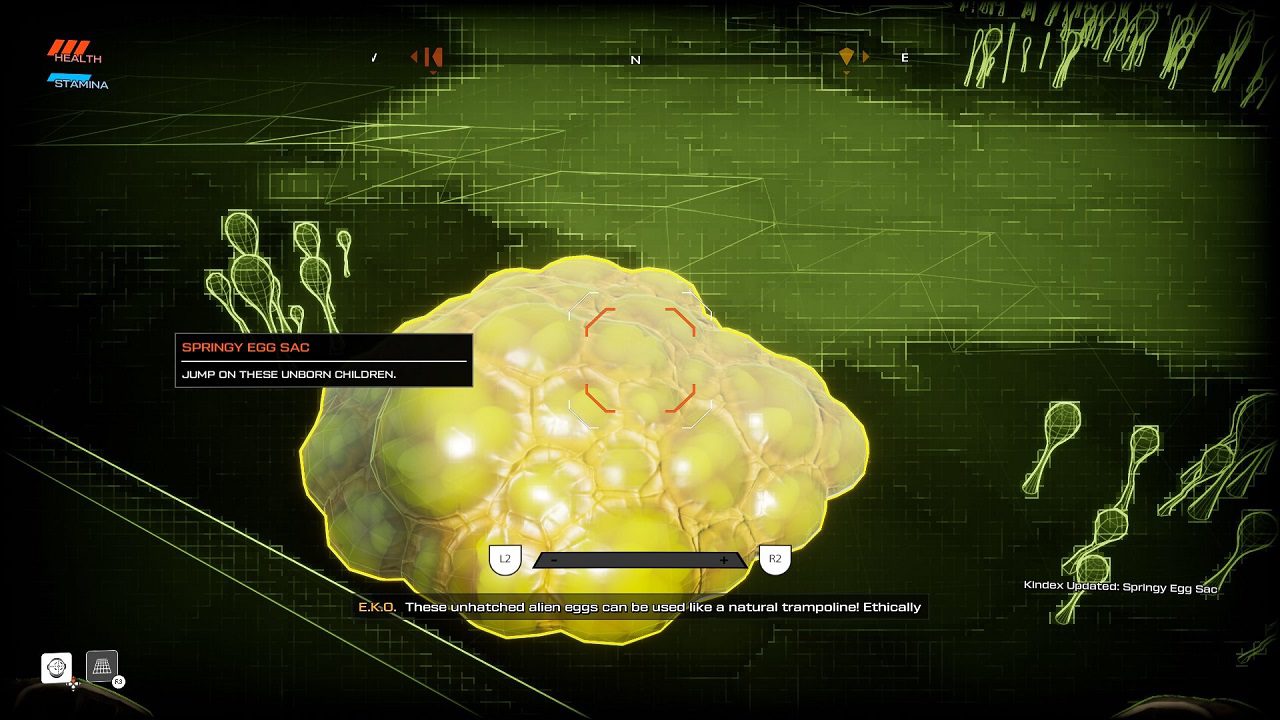
Combat in this game comes in two forms: shooting and slapping. You can also kick things, and by things I mean Pufferbirds, but that’s just cruel and you should feel bad for even thinking about it. Some enemies can only be shot, some can only be slapped. You can also slap and shoot things around you. Slap that carbon deposit. Shoot that tree. You only live once – or multiple times thanks to the kind people and tech at Kindred Aerospace!
Even though slapping and shooting everything within arm-or-gun’s reach sounds fun in theory, it’s not that easy in practice. Combat can be frustrating at time thanks to odd hitboxes and while some enemies will explode from a single shot to a limb, some will take multiple slaps to a very tiny hitbox located in a very dangerous area to even consider death as an option. Sometimes the only way to complete a quest is to kill something, though, so I slap on.
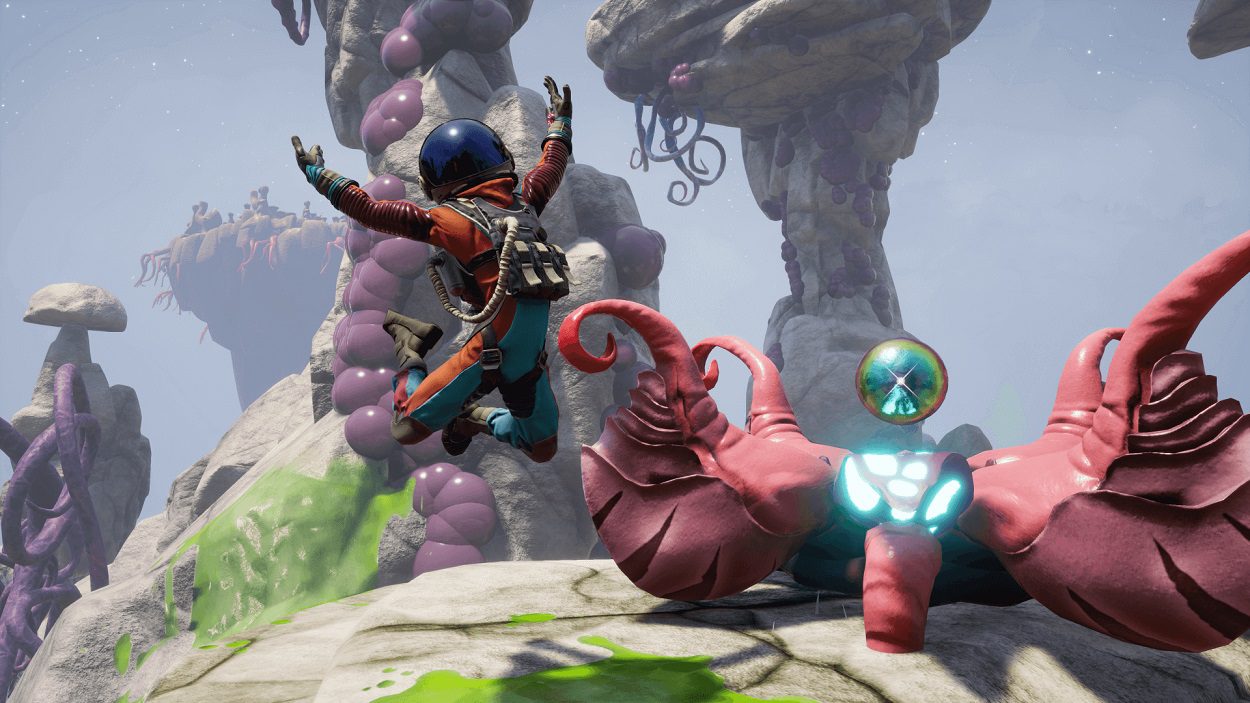
The planet also contains various environmental puzzles that vary from using special plants to grapple across ledges to kicking poor Pufferbirds into the gaping maw of carnivorous plants to unlock pathways. Similar to how combat can become downright frustrating, the puzzles can also confound even the wisest of humans (or sentient space-dogs, seeing as I appear to be playing as one) and offer no mercy. If you’re trying to grapple to a new location and you slip, that’s it. Game over. Respawn in your ship and start again, because you need to complete this quest to soldier on.

Another one of my gripes with the game is the absolutely tiny UI. Of course, this may differ depending on which platform you’re playing on, how close to the screen you are, and how good your eyesight is, but I found that, in general, the text was just too small. While the main benefit of having a UI for ants is being able to enjoy more of the game without icons cluttering the screen, it would be nice to be able to see what I’m meant to be doing without whipping out a telescope.
Journey To The Savage Planet can be completed in around 8 hours if you’re just looking to power through. There’s actually an achievement for completing it in under 4 hours but, as someone who keeps running into hallucinogenic trees and falling down cliffs, that’s not going to happen any time soon. The game also supports both single-player and co-op modes, meaning you can explore by yourself or go for a romp with a mate. Then you can play the game together too.
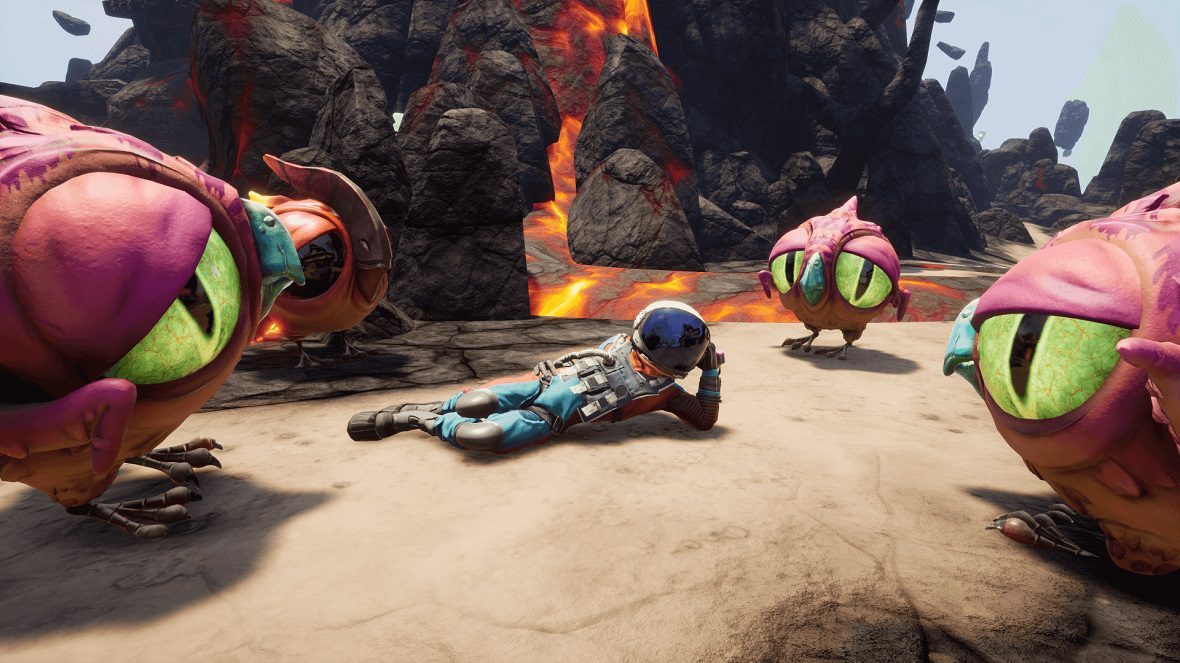
Long story short, unlike my journey across the not-so savage planet: if you’re looking for fun with a hearty helping of a challenge, you’re in the right place. If you’re looking for a serious game with deep lore, you’re in the wrong place. Journey To The Savage Planet is a short but sweet and fun romp across a shallow pond, not to be taken too seriously but to be enjoyed without thinking too hard about it. I’d love to see a more in-depth sequel in the future but, for now, I’ll remain content with slapping rocks and loving my Pufferbirds.
Journey To The Savage Planet is out now and available on Xbox One, PlayStation 4, and PC via the Epic Games Store.









User forum
0 messages